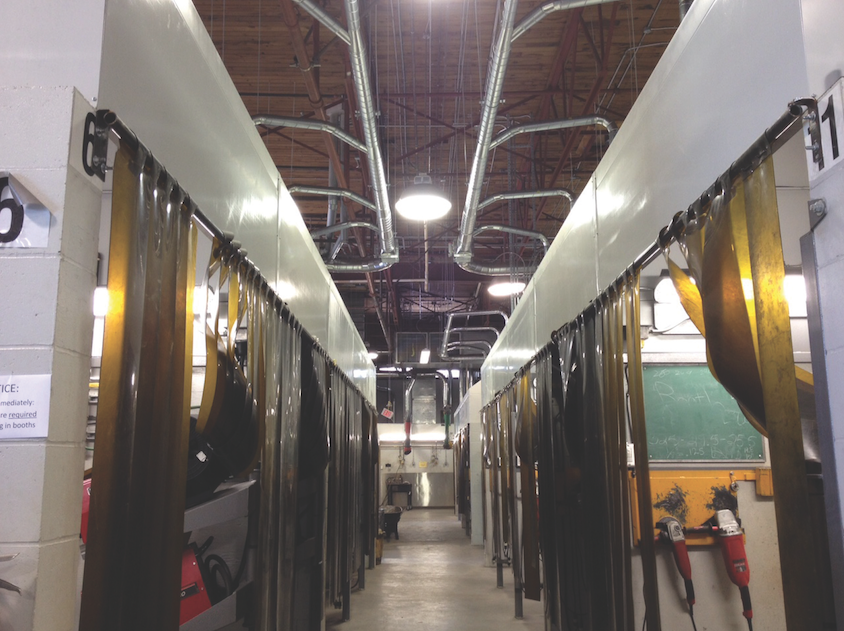By Megan Lambert (The Cascade) – Email
Print Edition: June 17, 2015
 Three weeks ago, 11 UFV welding students filed through Student Union Society (SUS) doors to make a semi-formal complaint to president Thomas Davies about the new ventilation system at the Trades and Technology Centre (TTC) in Chilliwack.
Three weeks ago, 11 UFV welding students filed through Student Union Society (SUS) doors to make a semi-formal complaint to president Thomas Davies about the new ventilation system at the Trades and Technology Centre (TTC) in Chilliwack.
“I’ve got significant concerns from students in various welding programs regarding facility issues for the ventilation air flow system,” he said at the last SUS board meeting.
“At this point, I’ve been touch with facilities and the dean of Applied and Technical studies.” Davies then went on to say that he had only just received the complaint the previous day.
The problem started at the beginning of the winter semester when the university decided to upgrade the welding booths. Before the construction, each booth had an open roof with a snorkel to pick up debris, and there was a larger fan in the welding shop. When the air quality was tested before, associate welding professor Pat McGurk says the results turned out well — save for higher traces of one metal.
“We have old samples … which showed higher levels of chrome — above the exposure limit, I believe. All other levels were lower than the eight-hour exposure limit. That meant we could weld in the booths without respirators,” he says.
“But because they’ve changed the conditions and put a hood on, we have to [take] a new test.”
During the semester, the university installed hoods on the booths with small fans at the top. These fans are controlled by a sensor that adjusts the speed of the fan according to how much work the welder is doing, then turns off as soon as the welder leaves. The fan at the top of the hood is meant to pick up any fumes that the snorkel would not.
The university remodelled 10 booths out of 40 in the shop at once. There are over 40 students in both morning and afternoon welding classes, so in the meantime the welding faculty set up temporary booths elsewhere in the shop.
McGurk says the hoods were supposed to be more efficient, saving energy with the varying speeds. However, the welding students started noticing a build-up of residue after the system was installed.
“What the students have been noticing is there is a lot more particulate showing up in the booth,” he says. McGurk added that the powder in the booths was not there before, and guesses that the particulate is confined to the booth instead of escaping into the room at large.
However, McGurk says nothing is set in stone until the air samples come back.
“We don’t know if there’s a problem yet,” he says.
According to McGurk, UFV has brought in a private company to take air samples that was to have the results by Monday, June 8. Those test results are a week late at time of print.
For now, welding students are required to wear respirators to protect them from potentially harmful chemicals while they finish their projects. The Cascade will continue to cover this story in the following weeks.


